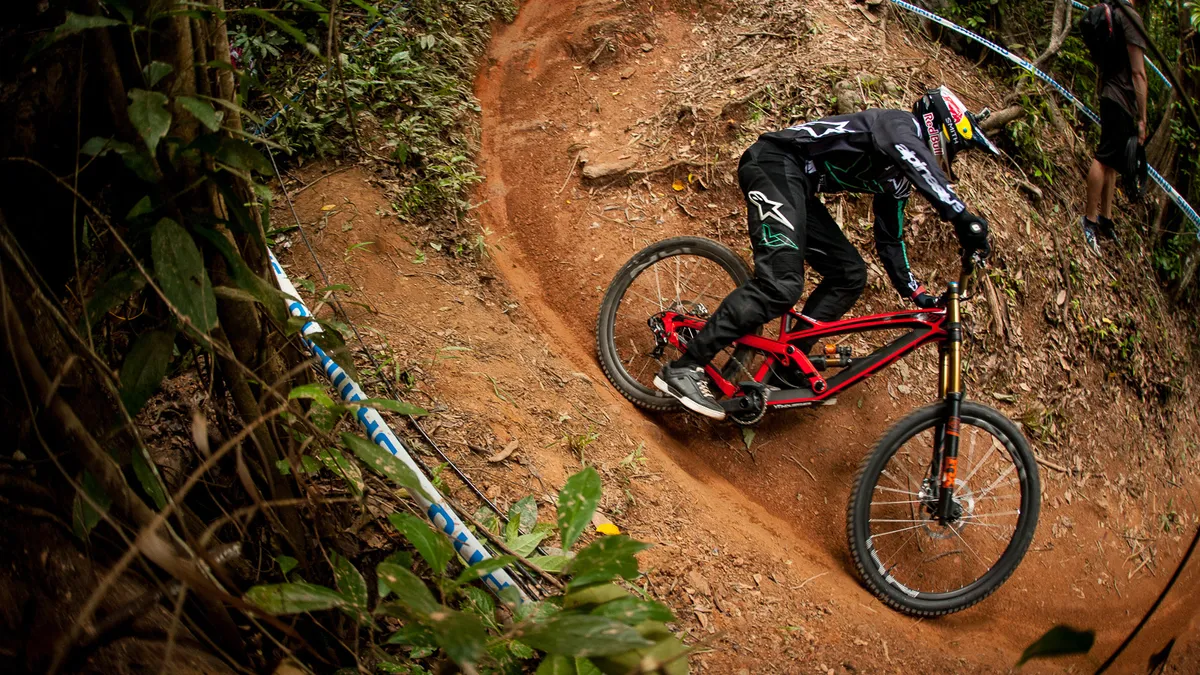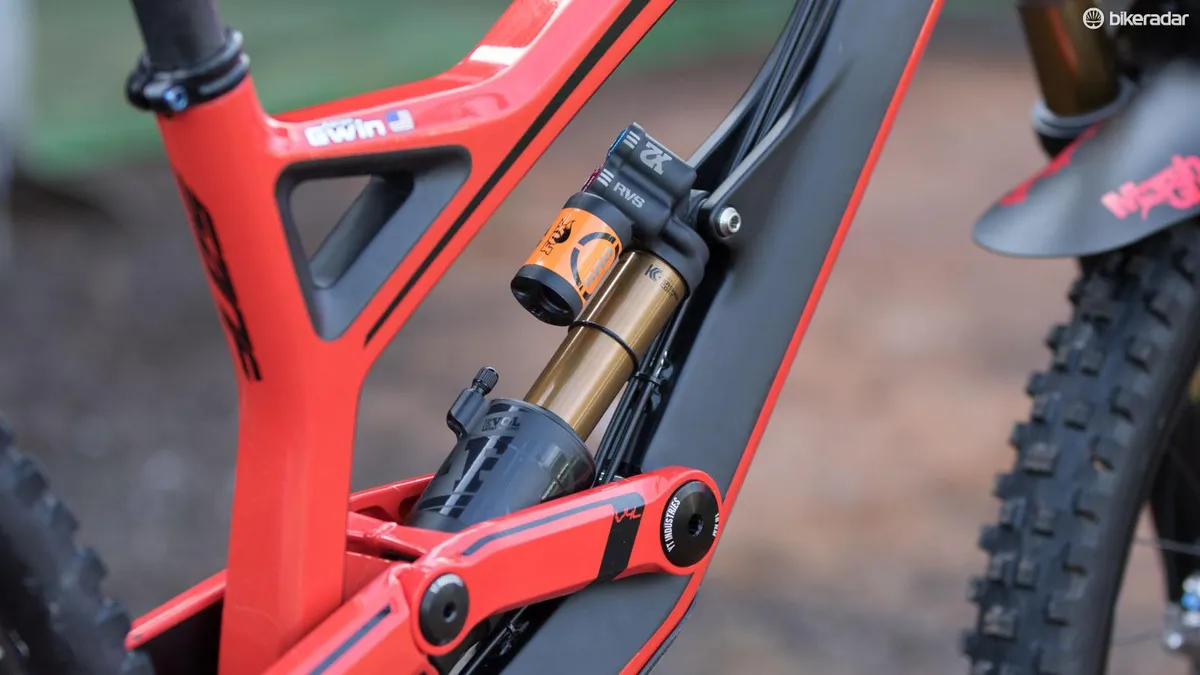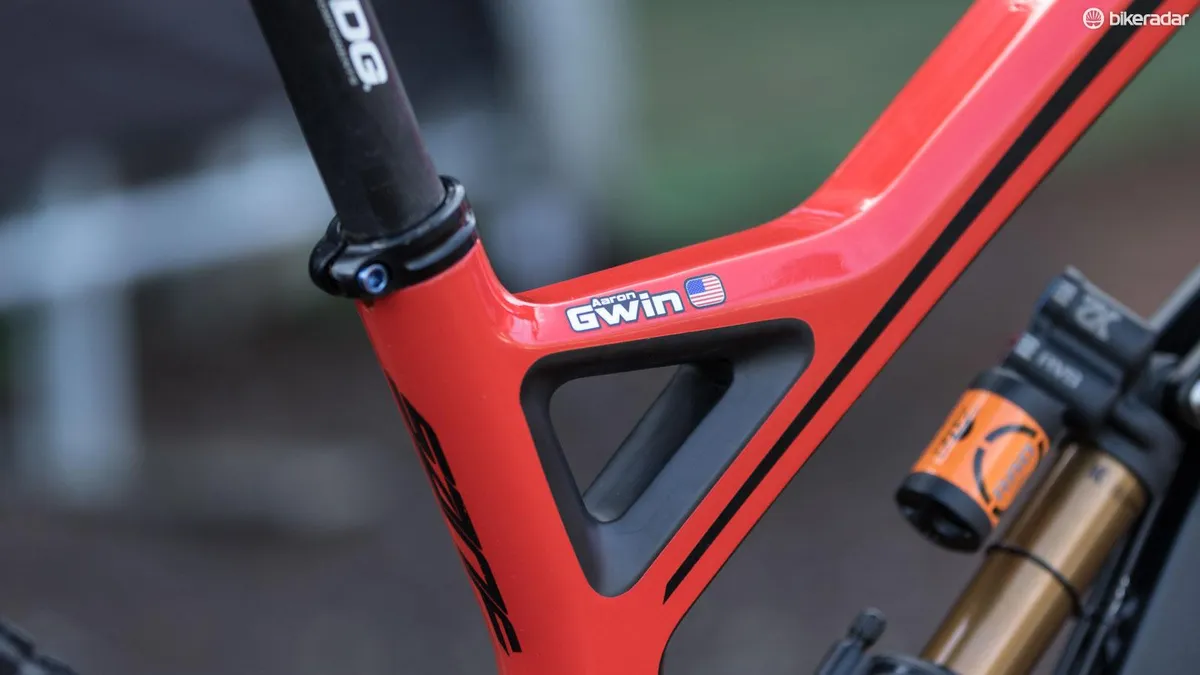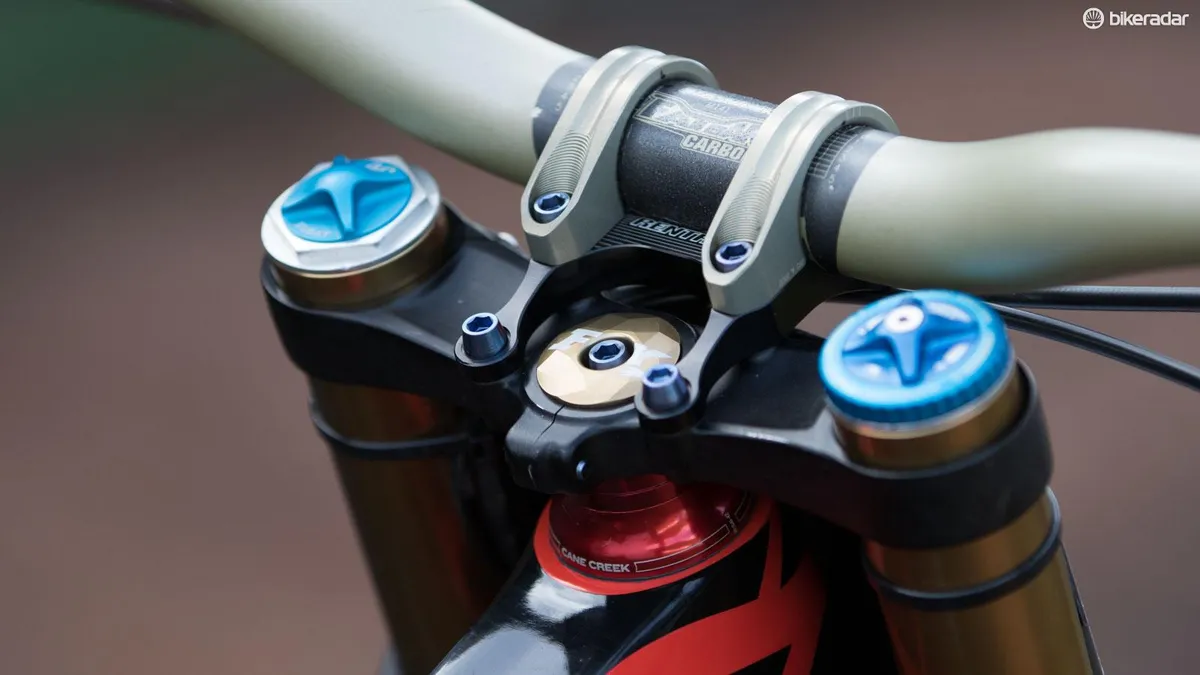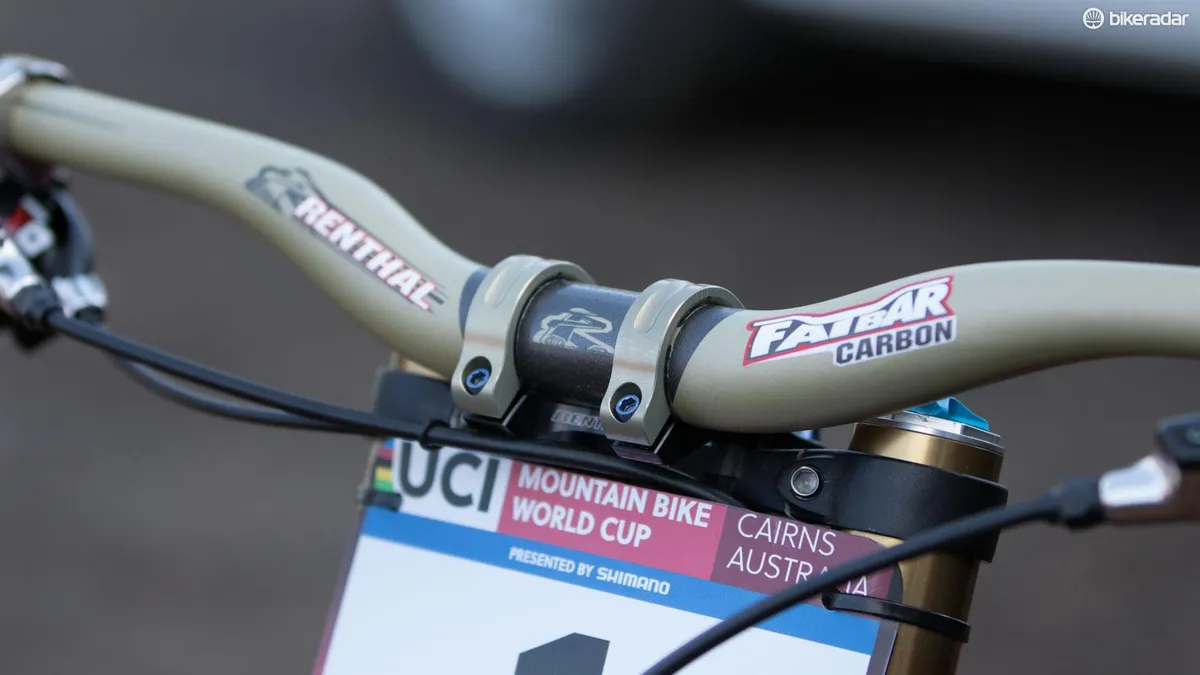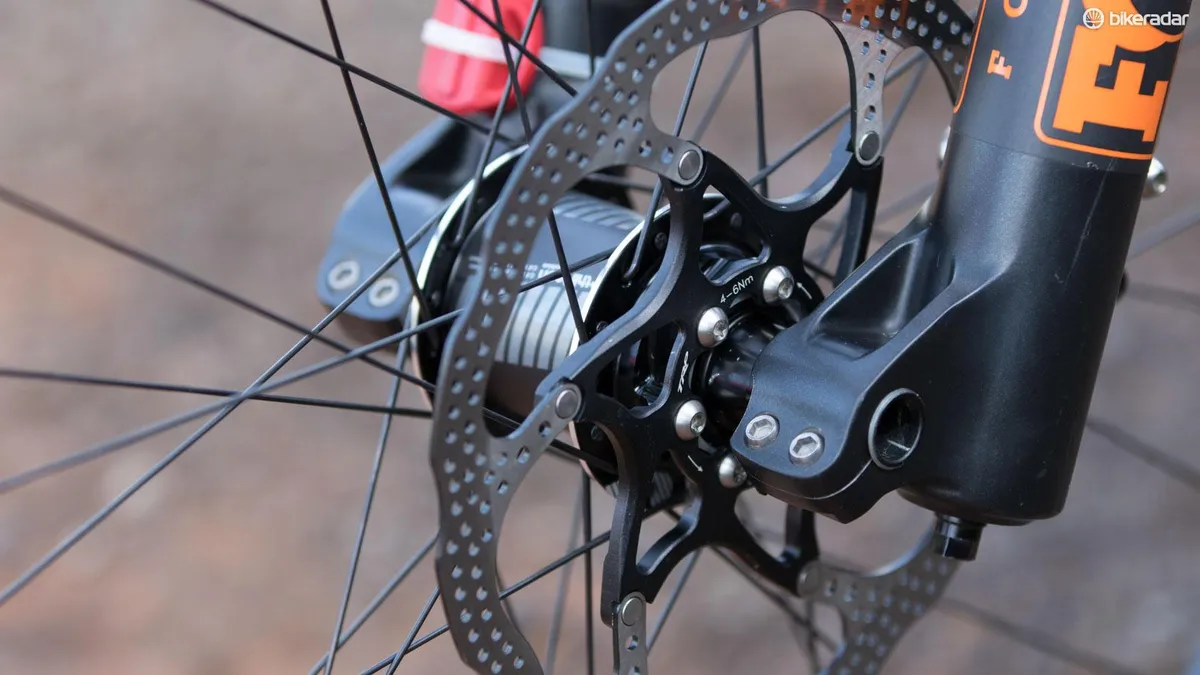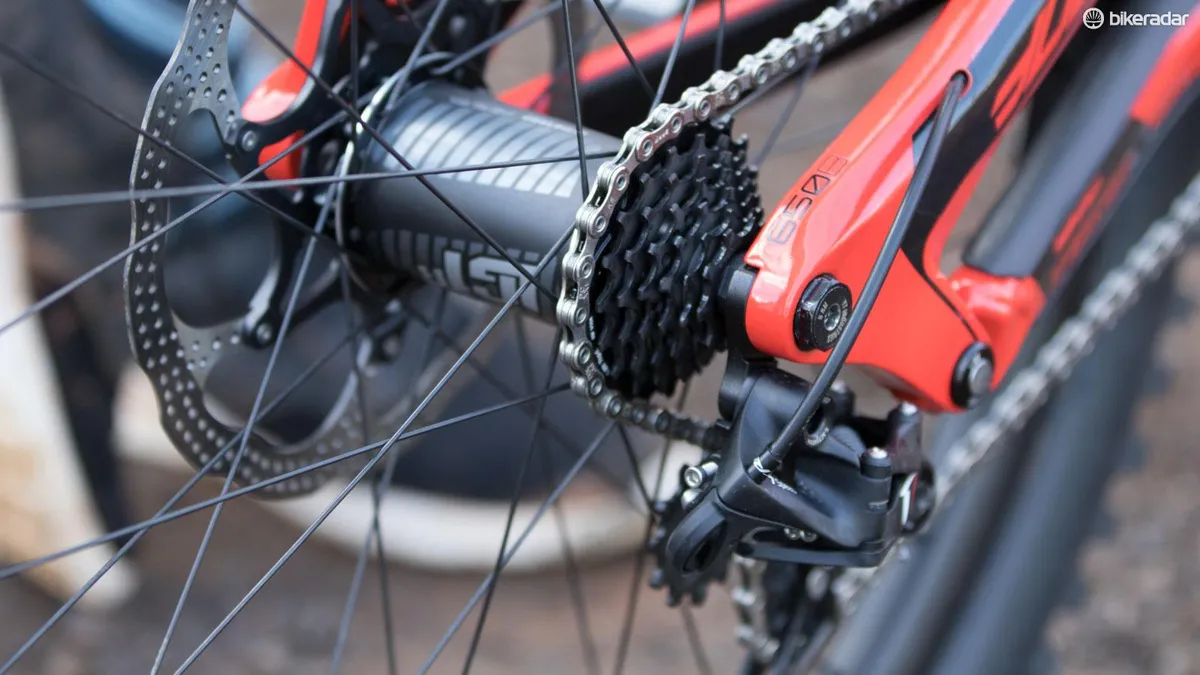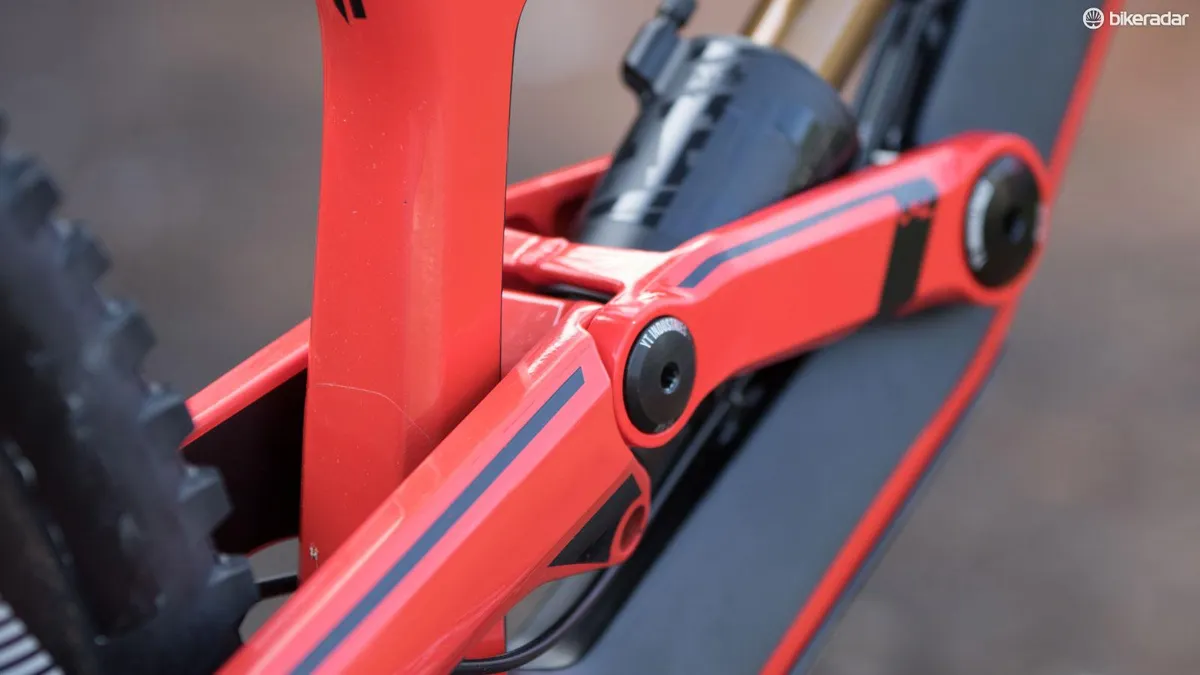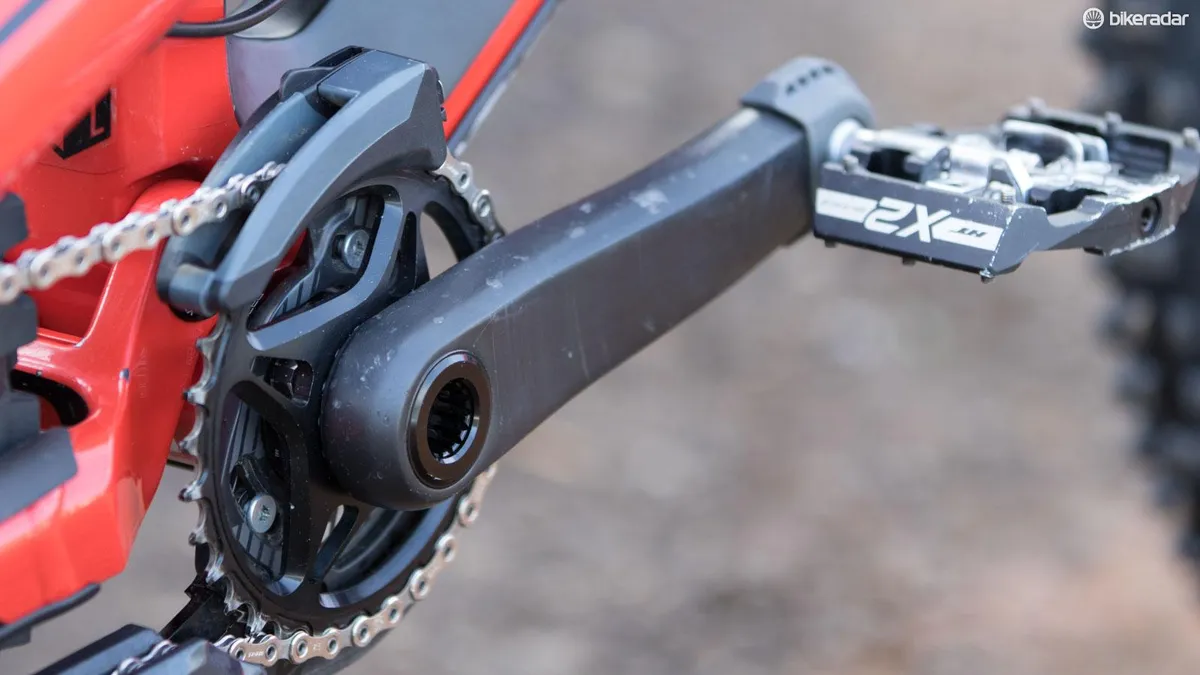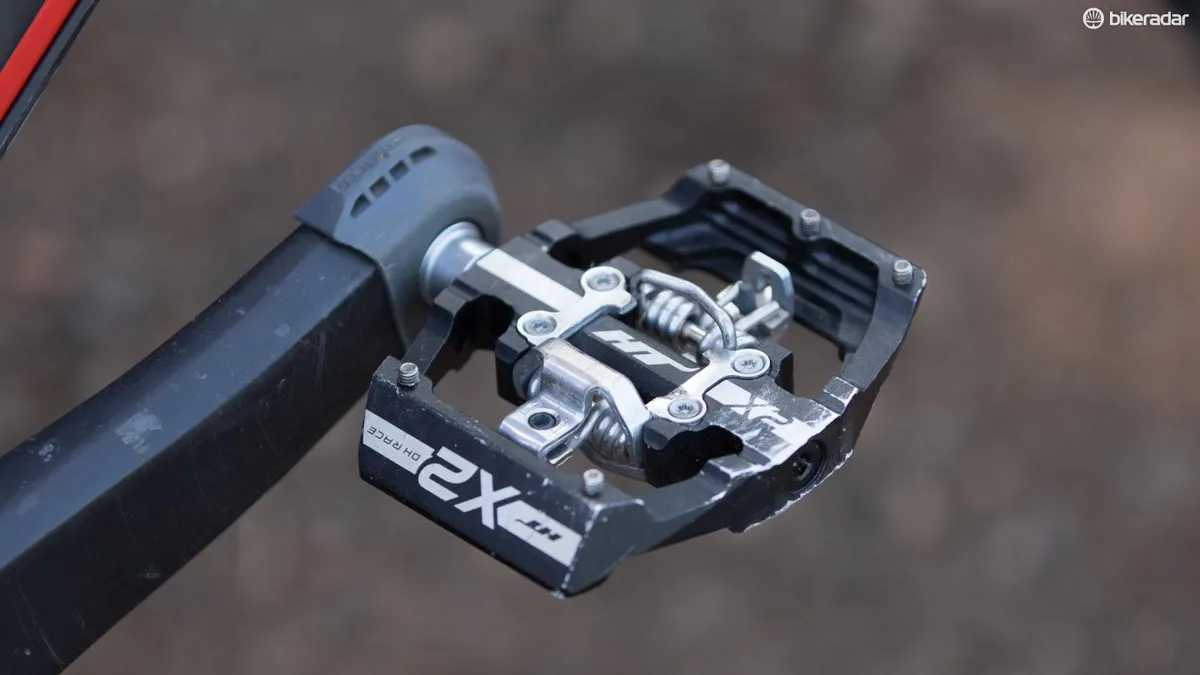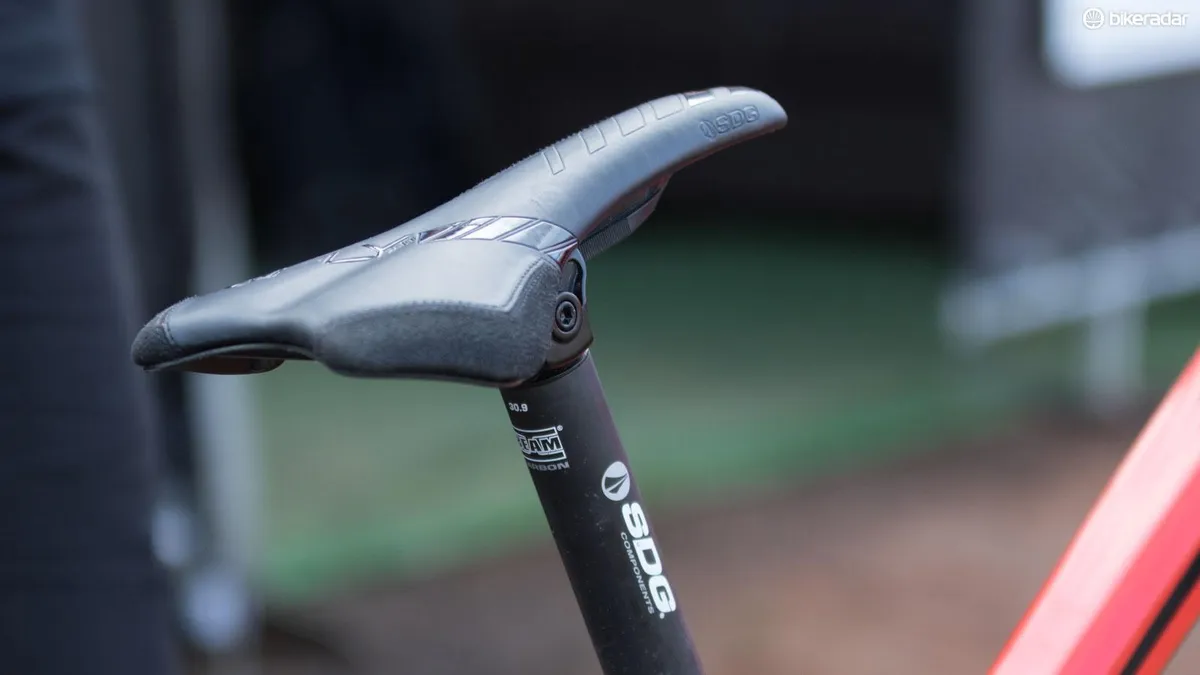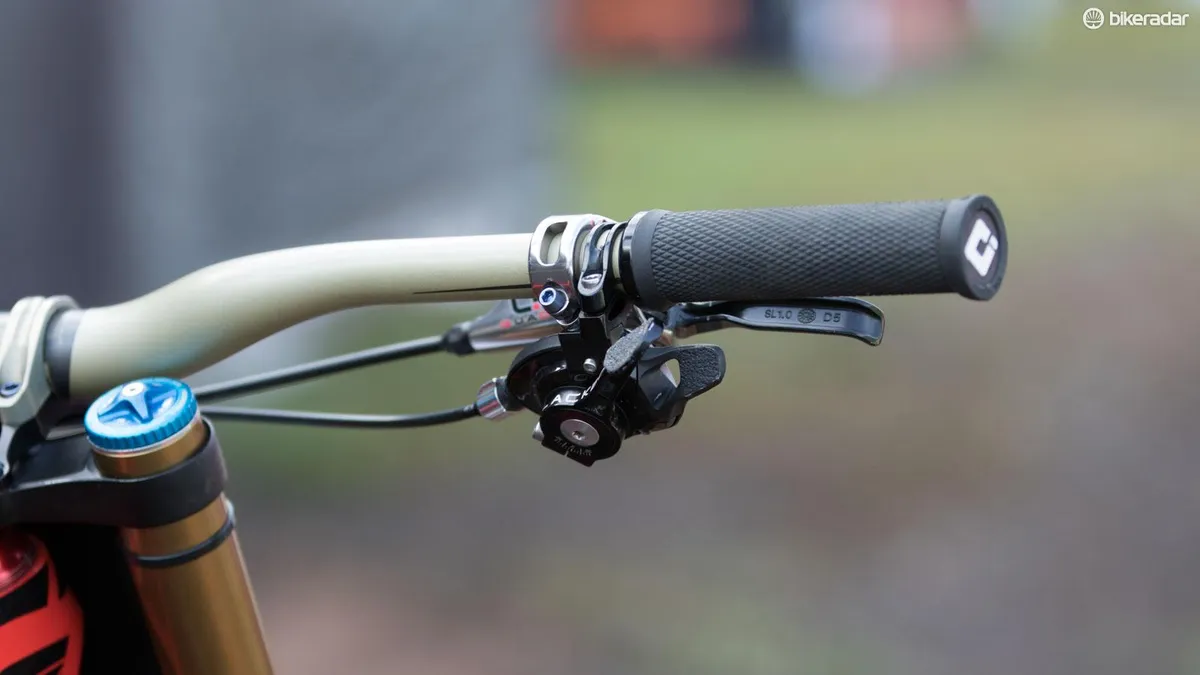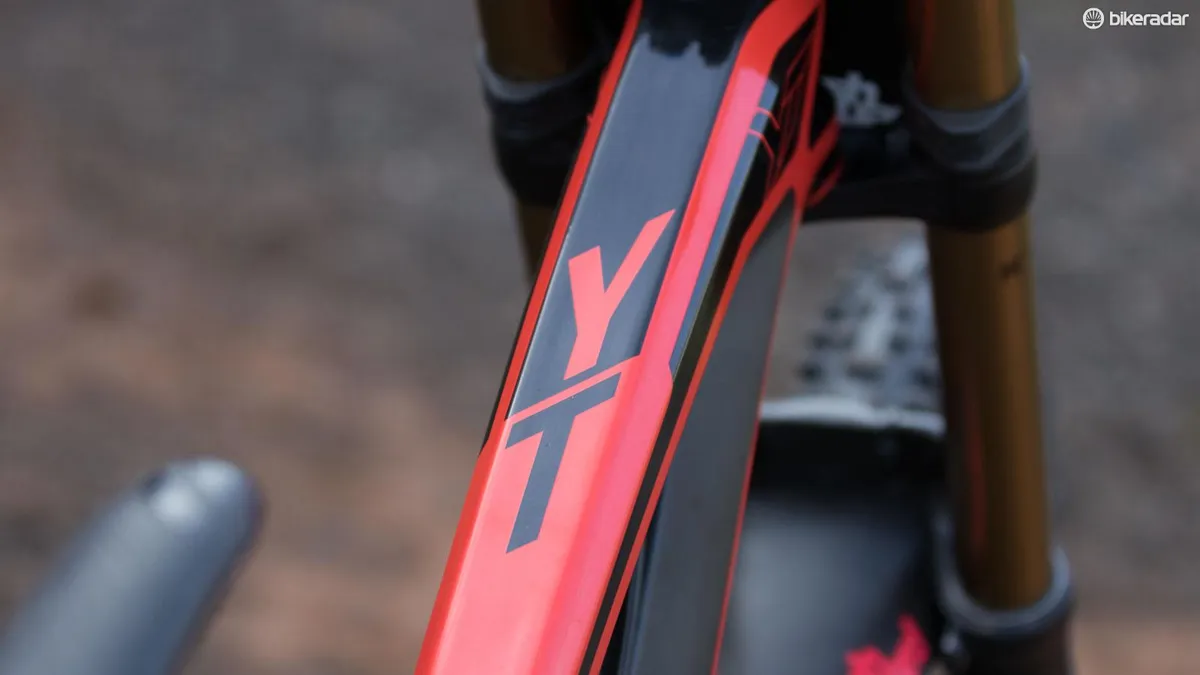America's speedster, Aaron Gwin, burst onto the downhill scene and quickly surged to the top of the sport with a ridiculously quick and calculated riding style brought across from motocross. Much as Sam Hill changed the speed of the sport in the past, Gwin upped that level again.
With a long history of riding exclusively for American bike brands (Yeti, Trek and then Specialized), his 2016 signing to consumer-direct German brand YT Industries shocked all. All the more significant, YT had never competed at World Cup level in downhill.
The 2016 season kicked off in Lourdes and the story couldn’t have started any better. Gwin took the win, earning YT its first World Cup win on debut and proving his rather unproven list of sponsors have serious merit. Perhaps not the result he sought, but a podium at Cairns is further proof this new outfit for Gwin is working.
A stock YT Tues CF running on air
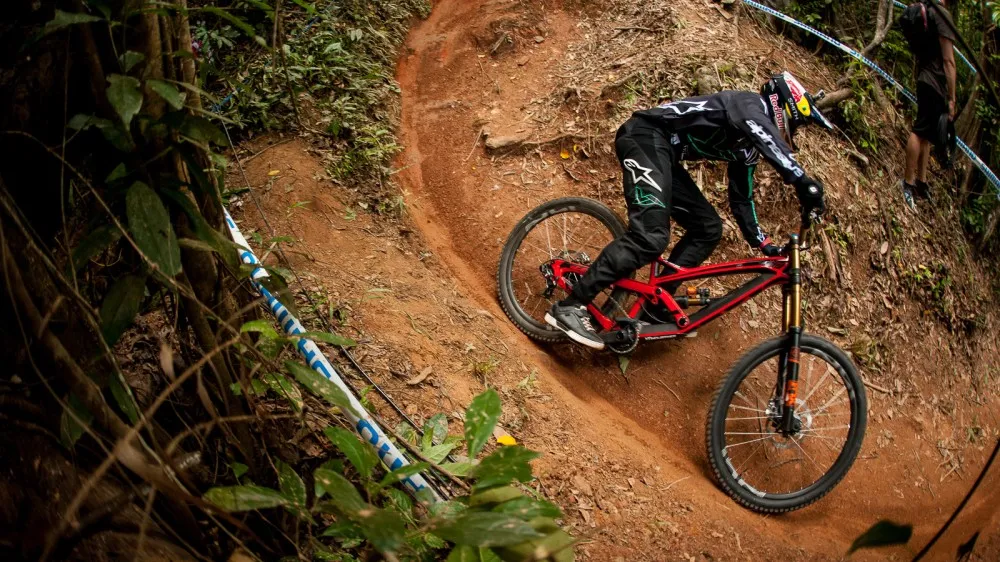
Gwin railing a turn on his way to a fourth place in Cairns, Australia (credit: @robertconroycreative)
Gwin is riding a stock large size YT Tues CF Pro, a frame that offers a long reach, a slack 63.5-degree head angle and a dumped bottom bracket. Despite a price tag lower than nearly all its competitors, the 208mm-travel Tues CF is clearly a fast frame.
While YT pitches it as both a park and race bike, the Tues CF’s carbon construction and 27.5in wheels certainly sing performance. The carbon version is said to be a full kilogram lighter than the cheaper alloy offering, even though the two share the same metal chainstays.
Where many of world’s best race on coil-sprung rear shocks for delicate small bump sensitivity, Gwin’s setup is far firmer. Such a setup obviously requires great strength to ride, but doesn’t wallow and slow through the bumps or on heavy landings. With enough speed, Gwin stays on the top of obstacles, rather than sinking through them.
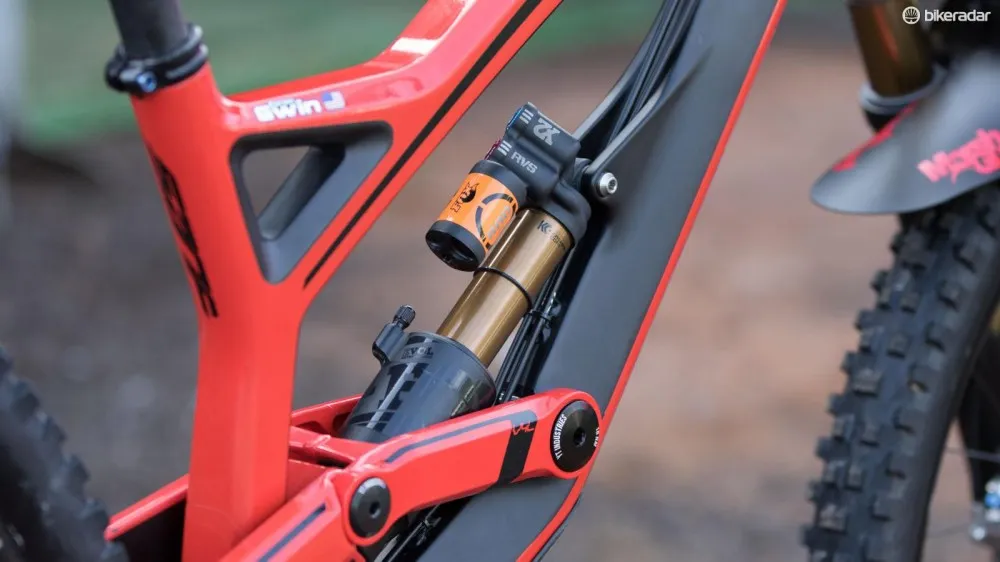
Air shocks have come a long way in recent time and offer important weight savings
Speaking to Gwin’s personal mechanic, John Hall, it appears Gwin is quite content with the Fox Float X2 air rear shock and will likely use it all season. It’s a perfect match to the air-sprung Fox 40 fork up front and helps to reduce weight of the bike too.
"We don’t disclose any actual suspension settings," Hall says when asked about specific setup, "but I can say it’s a pretty balanced feel. However, these settings change from course to course. It doesn’t change much though, maybe a click or two on the compression and one or two PSI in the air chambers."
Like so many riders at this level, it's near guaranteed that Gwin is using some custom damping tunes within his suspension. He has a long history working with Fox suspension and such adjustments are almost always done in the lead-up to the new season.
Micro drive gearing and carbon wheels mate
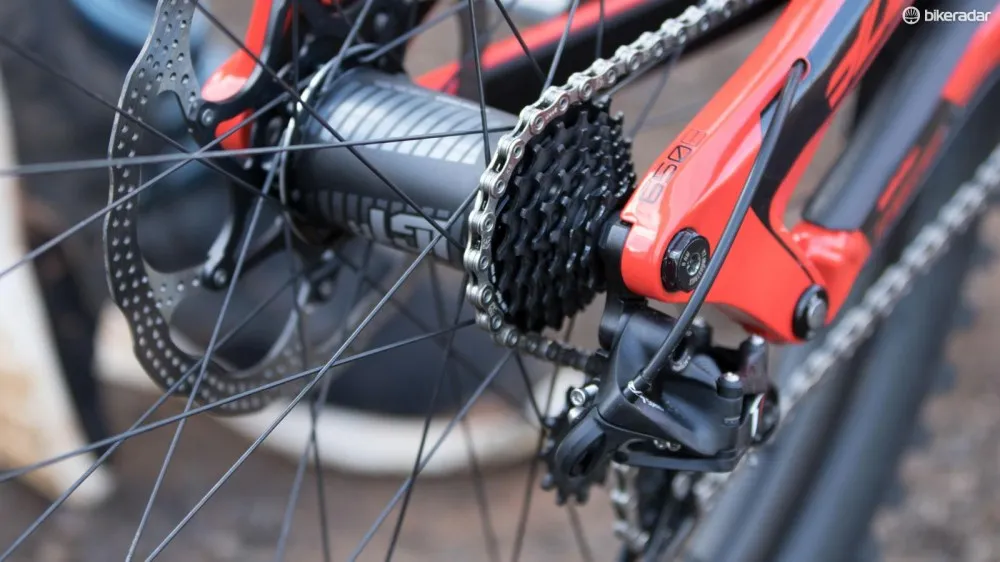
Tiny cassette shows ground-up innovation
Courtesy of e*thirteen, Gwin’s bike is set up with rather special gearing and wheels. The SRAM X01 DH shifter and rear derailleur send the chain across e*thirteen's new 9-21t 7-speed cassette, an item that’s effectively built with its own rear hub.
This new cassette design not only offers tight ratios, but the market-leading 9t cog allows Gwin to use just a 32t chainring, which offers improved ground clearance when attacking the rock gardens. To put this in perspective, many of Gwin’s closest competitors were running a 36t chainring on the same course.
Traditional cassette freehubs can’t host anything smaller than an 11t cog, while SRAM’s XD design can go to 10t. This e*thirteen LG1r design may be proprietary, but in addition to the gearing it allows for the creation of a far stronger and stiffer wheel too. With a narrower freehub width, e*thirteen has been able to space out the spoke flanges ultra wide. By increasing this spoke bracing angle, you can bet the e*thirteen LG1r carbon wheels with a 27mm internal width are well up to a punishing.
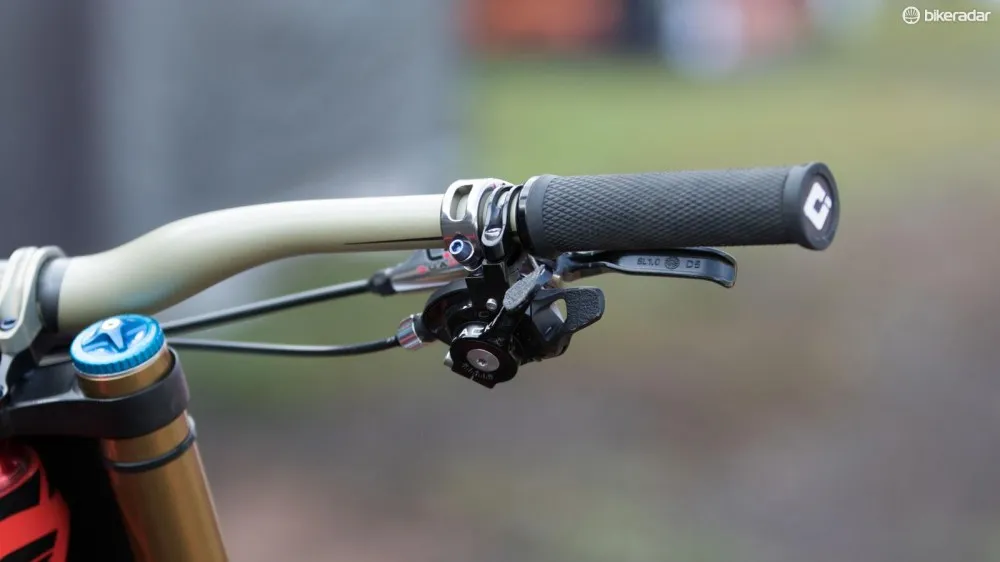
Titanium bolts and friction tape at the shifter
Looking back at that SRAM X01 DH shifter and Hall has glued friction tape (aka sandpaper) over the thumb levers for guaranteed traction at the thumb.
Don’t talk about the tyres
With a new team comes a new tyre sponsor, and it’s not likely a brand you’ve tried before (at least not in recent times) – Onza. Taking a peek in the pits, there was certainly a variety of the new rubber.
However, with inclement weather, Gwin was trialling different combinations nearly every run. When we photographed the bike, the blacked out tyres were clearly something else and amongst the pile of Onzas sat other treads from a variety of brands.
"He’s very specific about his tyre pressures, but we don’t disclose what that is," says Hall when asked if there’s something specific about how Gwin sets his bikes up.
TRP at the top level
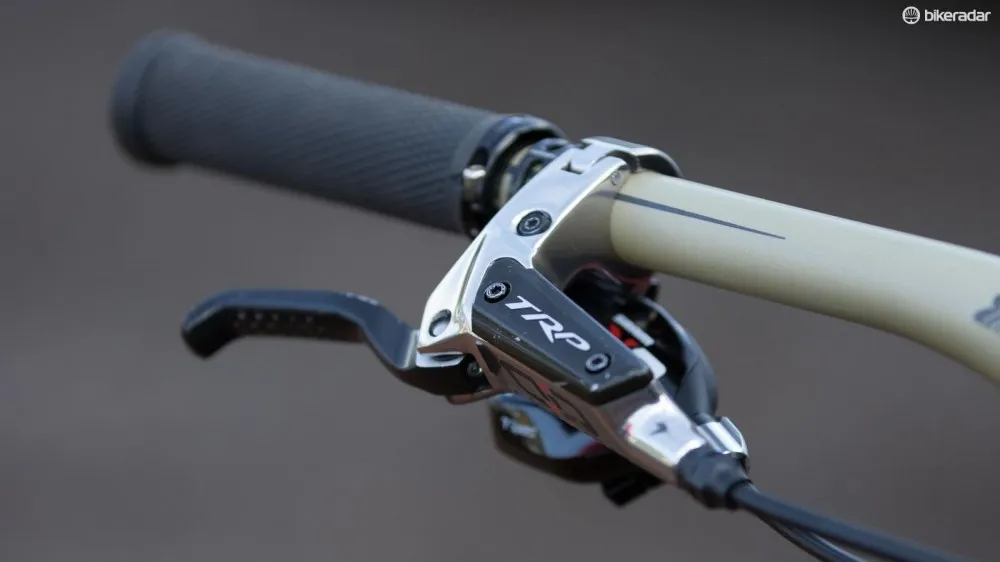
TRP gets its first World Cup downhill win with the Quadiem SL brake
Another aspect that Gwin is particular about is his brake feel. "He prefers a short throw and solid feel. It’s not too uncommon for riders to prefer this," confirms Hall.
And in a sport where brake control is crucial, Gwin’s move to TRP brakes – the performance product division of Tektro – also comes as a surprise. The Taiwanese brand has had its four-pot Quadiem SL downhill brake on the market for sometime now, but at least it'll now be known. With composite pistons, carbon lever blades and two-piece rotors, these silver stoppers look the goods.
Complete bike specifications
- Frame: YT Tues CF, size Large
- Shock: Fox Float X2 Factory
- Fork: Fox 40 Float RC2 Factory
- Stem: Renthal New Integra, 50mm length
- Headset: Canecreek 110, tall cover
- Grips: ODI Elite motion lock-on
- Bars: Renthal Fatbar Carbon, 790mm width, 30mm rise
- Front brake: TRP Quadiem SL w/ 203mm TRP two-piece rotor
- Rear brake: TRP Quadiem SL w/ 203mm TRP two-piece rotor
- Brake levers: TRP Quadiem SL
- Chain guide: e*thirteen LG1+
- Rear derailleur: SRAM X01 DH
- Shift levers: SRAM X01 DH 7-speed, with grip tape
- Cassette: e*thirteen LG1r 9-21t, 7-speed
- Chain: SRAM PC-XX1
- Crankset: e*thirteen LG1r carbon, 165mm, 32t
- Bottom bracket: e*thirteen pressfit 30
- Pedals: HT X2 clipless
- Wheels: e*thirteen LG1r
- Front tyre: Unbranded 27.5 x 2.4in, tubeless (sponsored by Onza)
- Rear tyre: Unbranded 27.5 x 2.4in, tubeless (sponsored by Onza)
- Saddle: SDG I-Beam I-Fly
- Seatpost: SDG I-Beam carbon
Critical measurements
- Rider's height: 1.78m (5ft 10in)
- Rider's weight: 75kg (165lb)
- Top tube length (effective): 624mm
- Total bicycle weight: 15.5kg (34.17lb) (approx.)

